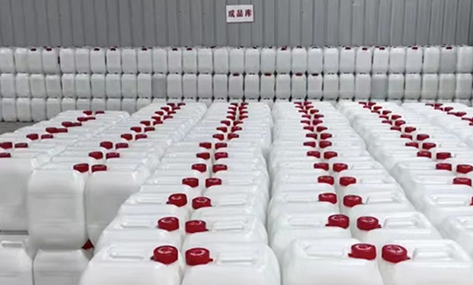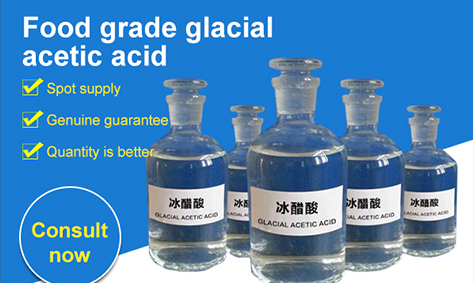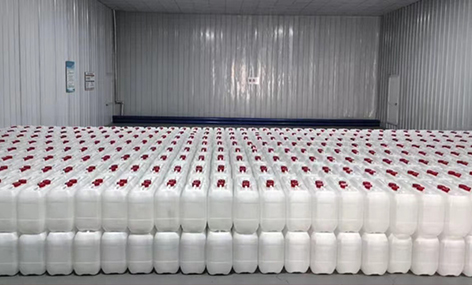
ก.ค. . 22, 2025 00:20 Back to list
Food Grade Glacial Acetic Acid - Hebei Yishan Spices Co., Ltd.|Purity, Safety, Industrial Use
Food Grade Glacial Acetic Acid: A Comprehensive Guide
Glacial acetic acid is a vital chemical compound with wide-ranging applications in food processing, industrial manufacturing, and scientific research. Among the many products available, Food Grade Glacial Acetic Acid stands out as a premium solution for industries requiring high purity and safety. This article explores the features, advantages, technical specifications, and applications of this product, along with insights into its manufacturer, Hebei Yishan Spices Co., Ltd..
Product Overview
Glacial acetic acid, also known as anhydrous acetic acid, is a clear, colorless liquid with a strong vinegar-like odor. It is derived from acetic acid, which is the primary component of vinegar. However, unlike diluted vinegar, glacial acetic acid contains a high concentration of acetic acid, typically around 99.5% or higher. This makes it ideal for industrial and food-grade applications where purity is critical.




Key Features and Advantages
Food Grade Glacial Acetic Acid is specifically formulated for use in the food industry, ensuring compliance with strict safety and quality standards. Below are its core features and advantages:
- Purity: The product has a minimum acetic acid concentration of 99.5%, ensuring minimal impurities and maximum effectiveness.
- Safety: It is produced under controlled conditions to meet food-grade specifications, making it safe for use in food processing and preservation.
- Stability: The anhydrous nature of glacial acetic acid prevents microbial growth and ensures long-term storage without degradation.
- Cost-Effectiveness: Its high concentration reduces the need for dilution, saving time and resources in industrial applications.
- Environmental Compliance: The production process adheres to environmental regulations, minimizing waste and emissions.
Technical Specifications
The technical specifications of Food Grade Glacial Acetic Acid are designed to meet the demands of modern industries. Key details include:
| Parameter | Specification |
|---|---|
| Chemical Formula | C₂H₄O₂ |
| Concentration | ≥99.5% (anhydrous) |
| Appearance | Clear, colorless liquid |
| Odor | Strong vinegar-like smell |
| Storage Conditions | Store in a cool, dry place away from direct sunlight |
| Packaging | Available in 5L, 25L, and 200L drums |
Applications in Various Industries
Food Grade Glacial Acetic Acid is a versatile compound with applications across multiple sectors. Here are some of its primary uses:
1. Food Processing
It is widely used as a preservative and flavoring agent in food products. Its antimicrobial properties help extend the shelf life of perishable goods, while its acidic nature enhances the taste of sauces, pickles, and dressings. According to the National Institute of Standards and Technology (NIST), precise measurements of acetic acid concentration are critical for ensuring food safety and consistency (NIST, 2025).
2. Pharmaceutical Industry
In pharmaceuticals, glacial acetic acid serves as a solvent and reagent for drug synthesis. Its high purity ensures that it does not introduce contaminants into medical formulations.
3. Industrial Manufacturing
It is used in the production of cellulose acetate, a material used in textiles and plastics. Additionally, it acts as a catalyst in chemical reactions, improving the efficiency of industrial processes.
4. Cleaning and Sanitization
Due to its antimicrobial properties, glacial acetic acid is employed in cleaning solutions for industrial equipment and food processing facilities. It effectively removes biofilms and mineral deposits without leaving harmful residues.
Company Background: Hebei Yishan Spices Co., Ltd.
Hebei Yishan Spices Co., Ltd. is a leading manufacturer and supplier of high-quality chemical products, including Food Grade Glacial Acetic Acid. Based in Shijiazhuang City, Hebei Province, the company has built a reputation for excellence in the production of food-grade chemicals and industrial solvents.
With over a decade of experience, Hebei Yishan Spices Co., Ltd. adheres to rigorous quality control standards to ensure its products meet international requirements. The company's commitment to innovation and sustainability is reflected in its state-of-the-art production facilities and eco-friendly manufacturing processes. By combining advanced technology with traditional expertise, the company continues to deliver reliable solutions to global markets.
Why Choose Hebei Yishan Spices Co., Ltd.?
There are several reasons to trust Hebei Yishan Spices Co., Ltd. for your glacial acetic acid needs:
- Quality Assurance: The company's products undergo strict testing to ensure compliance with food-grade and industrial standards.
- Custom Solutions: Hebei Yishan Spices Co., Ltd. offers tailored formulations to meet the specific requirements of its clients.
- Global Reach: The company exports its products to multiple countries, ensuring timely delivery and competitive pricing.
- Customer Support: A dedicated team provides technical assistance and guidance to help customers optimize the use of their products.
Conclusion
Food Grade Glacial Acetic Acid is a critical component in modern industries, offering unparalleled purity, safety, and versatility. Whether used in food processing, pharmaceuticals, or industrial applications, it delivers consistent results that meet the highest standards. With Hebei Yishan Spices Co., Ltd. as a reliable supplier, businesses can trust in the quality and performance of this essential chemical.
References
National Institute of Standards and Technology (NIST). (2025). Standards for Chemical Purity in Food Industry. Retrieved from https://www.nist.gov
This is the last article
-
Food Grade Glacial Acetic Acid - Hebei Yishan Spices Co., Ltd.|Purity, Safety, Industrial Use
NewsJul.22,2025
-
Food Grade Glacial Acetic Acid-Hebei Yishan Spices Co., Ltd.|High Purity&Food-Grade Certification
NewsJul.21,2025
-
Food Grade Glacial Acetic Acid-Hebei Yishan Spices Co., Ltd.|High Purity, Industrial & Food Applications
NewsJul.21,2025
-
Food Grade Glacial Acetic Acid-Hebei Yishan Spices Co., Ltd.|High Purity, Industrial & Food Applications
NewsJul.21,2025
-
Food Grade Glacial Acetic Acid-Hebei Yishan Spices Co., Ltd.|High Purity, Industrial & Food Applications
NewsJul.21,2025
-
Food Grade Glacial Acetic Acid-Hebei Yishan Spices Co., Ltd.|High Purity, Industrial & Food Applications
NewsJul.21,2025
